Audio-Technica ES933/ML Handleiding
Audio-Technica
Microfoon
ES933/ML
Bekijk gratis de handleiding van Audio-Technica ES933/ML (2 pagina’s), behorend tot de categorie Microfoon. Deze gids werd als nuttig beoordeeld door 81 mensen en kreeg gemiddeld 3.8 sterren uit 41 reviews. Heb je een vraag over Audio-Technica ES933/ML of wil je andere gebruikers van dit product iets vragen? Stel een vraag
Pagina 1/2

MicroLine® CONDENSER
HANGING MICROPHONE
- Designed for quality sound
reinforcement, professional
recording, television and other
demanding sound pickup
applications.
- Superior off-axis rejection for
maximum gain before feedback.
- Furnishing with a vinyl-coated steel
hanger that allows to be adjusted for
correct positioning.
- Accepts interchangeable elements
to permit angle of acceptance from
90° to 120°.
- Snap-on foam windscreen effectively
reduces noise from wind or
ventilation air currents.
- Connected power module can be
powered from any external 11V to
52V phantom power supply with an
XLRM-type connector.
- Enclosed in a rugged housing with a
low-reectance black nish. And also
available with white housing, cable
and hanger as the ES993W/ML.
The ES933/ML shall have a permanently-attached 15.2m miniature low-
noise cable, and require 11V to 52V DC phantom power for operation.
A uniform 90° angle of acceptance provides well-balanced audio
pickup. The microphone should be located forward of the front-most
source, above the rear-most source, and "aimed" between them (Fig.1).
Increasing the height of the mic above the sources will tend to equalize
sound levels between them, but may also increase from the mic to the
rear-most pickup should be no more than twice the distance to the front
source, to maintain front-to-rear balance (Fig.1).
Width of pickup is approximately 1.5 times the distance to the closest
performer. If additional mics are needed for wide sources, they should
be positioned apart laterally at least 1.5 times the distance to front
source, to avoid phase cancellation (Fig.2).
Output is low impedance balanced. The output connector mates with
XLRF-type cable connectors. The balanced signal appears across Pins
2 and 3, while the ground (shield) connection is Pin 1. Output is phased
so that positive acoustic pressure produces positive voltage at Pin 2, in
accordance with industry convention.
At integral 80 Hz high-pass filter provides easy switching from a flat
frequency response to a low-end roll-off. The roll-off position reduces
the pickup of low-frequency ambient noise (such as trafc, air-handling
systems, etc.), room reverberation and mechanically coupled vibrations.
Avoid leaving the microphone in the open sun or in areas where
temperatures exceed 43°C for extended periods. Extremely high
humidity should also be avoided.
10 dB
20k10k5k2k1k50020010050
8 kHz
200 Hz
1 kHz
5 kHz
0°
330°
300°
270°
240°
210°
180°
150°
120°
90°
60°
30°
Optional Accessories:
AT8506 four-channel 48V phantom power
supply (AC powered).
AT8801/EU single-channel 48V phantom
power supply (AC powered).
Polar Pattern
Frequency Response
SCALE IS 5 DECIBELS PER DIVISION
LEGEND
Frequency in Hertz
LEGEND 12” or more on axis
Roll-off
Response in dB
FORM No. ATGC-L0057-06-E
Machida • Tokyo • Japan
SPECIFICATIONS
ELEMENT Fixed-charge back plate
permanently polarized condenser
POLAR PATTERN MicroLine ®
FREQUENCY RESPONSE 30-20,000 Hz
LOW-FREQUENCY ROLL-OFF 80 Hz, 12 dB/octave
OPEN CIRCUIT SENSITIVITY -35 dB (17.7 mV) re 1V at 1 Pa
IMPEDANCE 250 Ω (1000 Ω without power module)
MAXIMUM INPUT SOUND LEVEL 133 dB SPL, 1 kHz at 1% T.H.D.
DYNAMIC RANGE (typical) 107 dB, 1 kHz at Max SPL
SIGNAL-TO-NOISE RATIO 68 dB, 1 kHz at 1Pa
SWITCHES Flat response, low-roll-off
PHANTOM POWER REQUIREMENTS 11-52V DC, 4 mA typical
WEIGHT Microphone
Power Module
14 g
56 g
DIMENSIONS Microphone
Power Module
143.3 mm - long,
8.0 mm - head diameter
98.0 mm - long,
18.9 mm - diameter
OUTPUT CONNECTOR Integral 3-pin XLRM-type
CABLE 15.2m - long, 3.2 mm - diameter
ACCESSORIES FURNISHED AT8138 foam windscreen
AT8452 steel hanger
OPTIONAL INTERCHANGEABLE
ELEMENTS
ESE-C cardioid (120°)
ESE-H hypercardioid (100°)
1.5 TIMES
DISTANCE "X"
MIC A MIC B
90° 90°
90°
ANGLE OF
ACCEPTANCE
DISTANCE "X"
LESS THAN 2 TIMES "X"
Fig.2Fig.1

10 dB
20k10k5k2k1k50020010050
8 kHz
200 Hz
1 kHz
5 kHz
0°
330°
300°
270°
240°
210°
180°
150°
120°
90°
60°
30°
指向特性
频率特性
声压曲线
1刻度5 dB
频率
频率 (赫兹 )
电平 平直
高通滤波
响应电平 (dB)
FORM No. ATGC-L0057-06-C
Machida • Tokyo • Japan
超指向性 悬挂式
专业型电容话筒
- 设计 于高 质量 收音 、 专业 录
音、电视广播、会议等高要
求的收音应用。
- 良好 的隔 音设 计, 在最 大增
益 时 仍 能 避 免 啸 叫 声 的 出
现。
- 附有 悬挂 弹簧 , 可 将收 音 头
固定调校到任何正确位置。
- 更换 式的 收音 头设 计, 可选
配 适 合 的 收 音 头 配 合 实 际
的 应 用 , 收 音 角 度 由 9 0 °至
120°。
- 附有 双层 式防 风海 棉罩 ,可
减低在讲话时收到其他风声
的情况出现。
- 连接到11 V 至52V话筒前置
放 大 器 供 电 组 件 , 话 筒 接
线 端 为 标 准 的 3针 卡 农 公 头
XL R M。
- 话筒 本身 为黑 色涂 层, 另有
白色的ES9 3 3W /ML型号。
ES 9 3 3 / ML 接上长度为15 . 2 m 的低噪声连接线,并以直流
11V 至52V 幻象供电工作。
配置为超指向性,收音角度为90°。话筒安装时,应先决定
最 前 及 最 后 的 声 源 位 置 , 而 话 筒 应 瞄 准 两 者 之 间 的 中 央 位
置( 图 ), 然 后提 升话 筒高 度 ,使 前后 声源 趋向 平 衡 ; 但却1
可 能 会 增 加 背 景 噪 音 声 及 回 声 , 所 以 调 校 话 筒 时 , 应 避 免
最后 的声 源距 离 长于 最前 声源 的 两倍 (图 ), 以维 持前 后平1
衡。
而与其他话筒的宽度距离,应以最前声源的大致1. 5 倍 距 离
为最 佳设 定( 图 ) ,这 样做 既 可覆 盖每 点声 源 ,又 可 避 免话2
筒的相位互相抵消情况出现。
低 阻 抗 的 平 衡 音 频 输出 ,音 频 信号 以卡 农公 头 的 2号 及 3号
针脚输出,而 1号针脚则为地线(屏蔽 )连接。输出相位将以
正相位电平设于 2号针脚上。
内置高质量高通滤波电路,可轻易由平直的频率响应,开
启 为 于 8 0 H z以下衰减的收音效果,应高通滤波器可低收
音 环 境 中 低 频 噪 声 (如 外 间 汔 车 引 擎 声 , 空 调 系 统 的 风 声
等),房间中的回声及机械性的震动声。
把 话 筒 暴 露 于 高 温 中 可 能 导 致 输 出 电 平 逐 渐 及 永 久 性 减
弱,应避免将话筒留在日晒的地方或长时间置于温度超过
43° C 的地方,而极高湿度也应避免。
选择配件:
AT8506 四通通48V幻象供电器 (交流供电)。
AT8801/EU 单通道48V幻象供电器 (交流供电)。
技术指标
收音头 固定充电背板,
静电型电容式
指向特性 超指向性
频率响应 30-20,000 Hz
高通滤波 80 Hz, 12 dB/octave
开通灵敏度 -35 dB (17.7 mV)
以 1V 于 1 Pa
输出阻抗 250 欧姆 (不带供电模组1000 欧姆)
最大承受声压 133 dB 声压, 1 kHz 于 1% T.H.D.
动态范围 (典型) 107 dB, 1 kHz
于最高声压
讯噪比 68 dB, 1 kHz 于 1Pa
开关 平直,高通滤波
幻象供电 直流 11-52V DC, 耗电 4 mA 典型
重量 话筒
供电模组
14
克
56
克
外形尺寸 话筒
供电模组
142.3 mm - 长,8.0 mm - 收音头直径
98.0 mm -
长,18.9 mm - 直径
输出连接器 内置式3针卡农公头
连接线 15.2 m - 长,3.2 mm - 直径
附属品 AT8138 防风海棉罩
AT8452 悬挂弹簧
可转换收音头 ESE-C 心形指向
(120°)
ESE-H 超心形指向
(100°)
约1.5倍距离:
"1.5X"
话筒 A 话筒 B
90° 90°
90°
一般收音角度
与收音头的距离
"X"
最远距离少于
2倍: "2X"
图2图1
Product specificaties
| Merk: | Audio-Technica |
| Categorie: | Microfoon |
| Model: | ES933/ML |
Heb je hulp nodig?
Als je hulp nodig hebt met Audio-Technica ES933/ML stel dan hieronder een vraag en andere gebruikers zullen je antwoorden
Handleiding Microfoon Audio-Technica
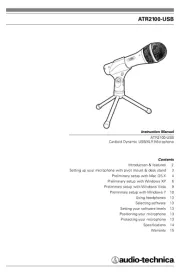
27 April 2025
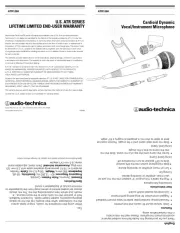
27 April 2025

27 April 2025
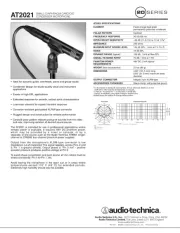
25 April 2025

28 Februari 2025
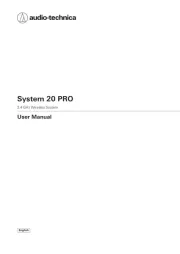
27 Januari 2025

6 December 2024

6 December 2024

6 December 2024

6 December 2024
Handleiding Microfoon
- Aston
- Vicoustic
- Teac
- Rane
- Antelope Audio
- TC Helicon
- Renkforce
- LOKUKA
- Isovox
- Sanken
- SmallRig
- Konig
- Fenton
- Lauten Audio
- Jabra
Nieuwste handleidingen voor Microfoon

13 September 2025

12 September 2025

12 September 2025
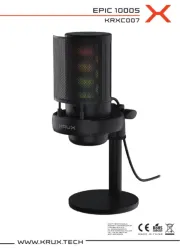
12 September 2025
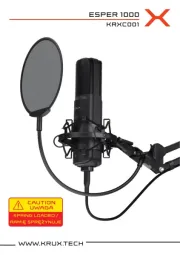
12 September 2025
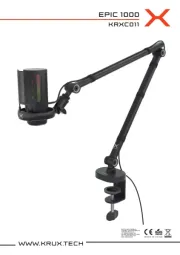
12 September 2025
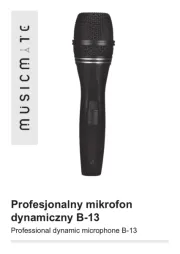
12 September 2025
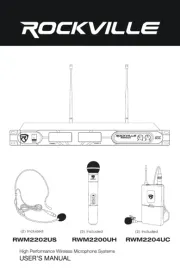
8 September 2025
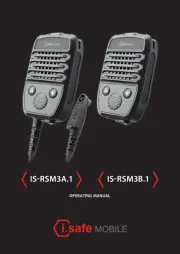
8 September 2025

8 September 2025